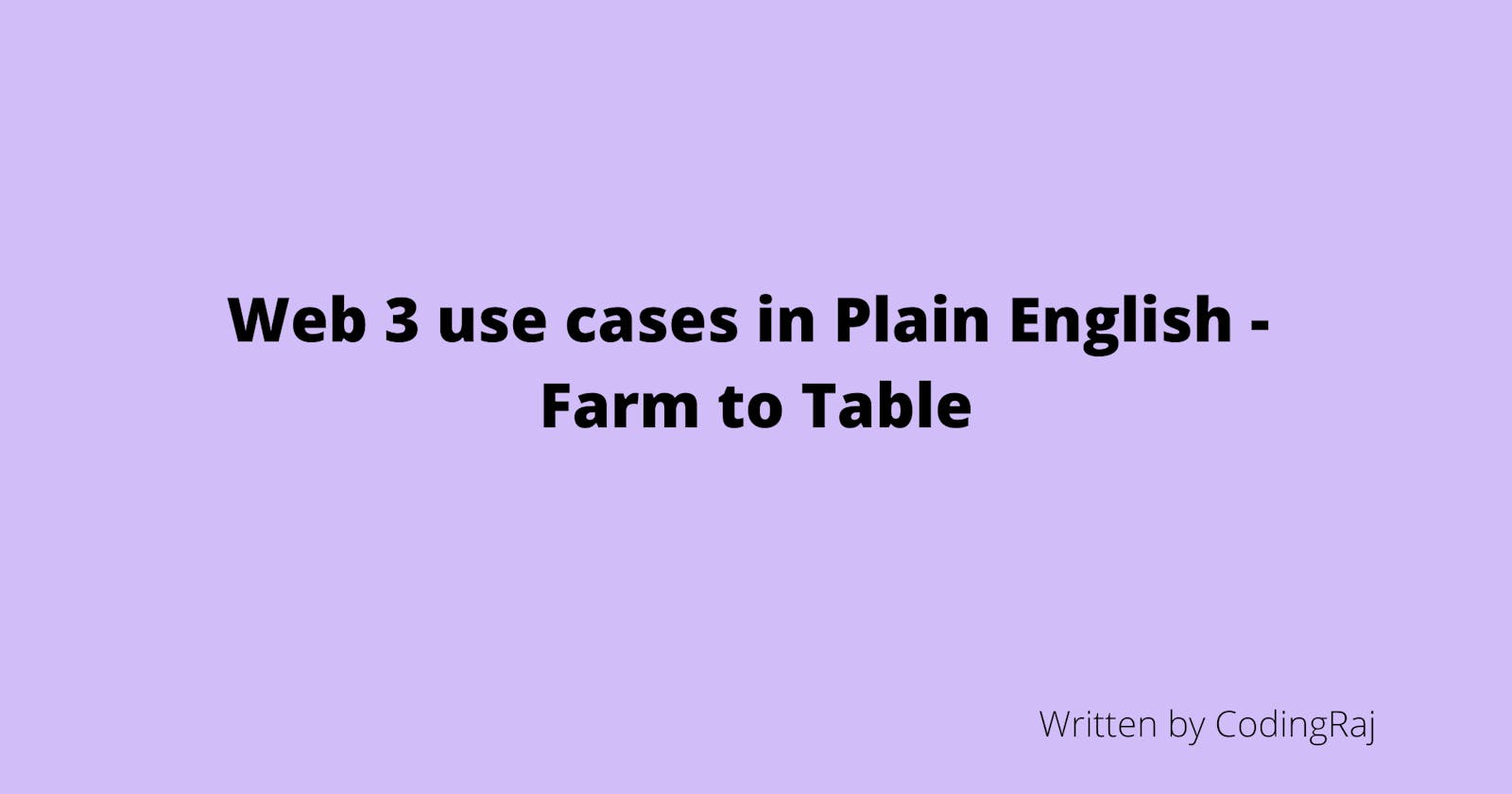Web3 Use Cases - Farm to Table
Imagine the customer buying organic spinach at the grocery store could scan a QR code using their phone and see where the spinach originated
Table of contents
Web3 Use Cases - Farm to Table
The Problem
How do you know the food you eat is from a local organic farm? Sure, the label on the bag of organic spinach says it is organic and came from a farm in the same state you live in. But is that label correct? Could the company that put that spinach in that bag be lying? The spinach could have come from an out-of-state farm, and the spinach is not organic. It was grown conventionally like most spinach, but someone along the way decided to just slap an organic label on it and charge the customer twice as much.
Ouch! The same goes with maybe the Alaskan salmon that you bought. Did it come from Alaska? Is it wild? Or is it farmed off the coast of the Atlantic?
Can you trust the labels on the food packaging? If the label says, it must be true. Or is it? Could there be a way to verify that your food is organic? Or, at the very least, you could see where the spinach originated from and what stops it made along the way before it got to your table? Similar to how you can see where a UPS package originated from and the multiple stops it took before it got to your door.
That is where Web3 and the blockchain can come in.
The Solution
First, we need a farm-to-table blockchain that farmers, distribution companies, and grocery stores would use to record the time and place where the food was picked, processed, packaged, transported, stored, and bought.
Imagine the customer buying organic spinach at the grocery store could scan a QR code or barcode using their phone and see where the spinach originated from, how it was grown, when it was picked and bagged, and when it arrived at the grocery store.
Sure the input data on the blockchain could be incorrect, but at least you are getting a level of transparency that you didn’t get before.
So how would this work?
- Assuming a farm-to-table blockchain has been built, all the players - farmers, food processing and packaging companies, food distributors, and grocery stores- have agreed to use this blockchain.
- The farmer picks the organic spinach that is ready to be sent for processing and packaging. The farmer uses an app on their phone to log how much spinach was harvested. The app will record the amount, time, and date, along with the farmers’ information - the farm’s name, organic certification, if it had one, and possibly the name of the farmer that picked the spinach.
- The food processing and packaging company goes to the farm to pick up the organic spinach. The person from the processing/packaging company uses their phone to log the receiving of the spinach. The app on the phone will log this onto the blockchain.
- Each time the spinach gets transferred to a location, the person receiving the spinach would log the transaction on their phone, then record that transaction on the blockchain.
- The packaging company would bag the spinach and put a QR code on the bag of spinach. The QR code will refer to an ID already created on the blockchain.
- The food distributor will pick up the bags of spinach and scan the QR code as they load them into their truck. This will record the date/time and distributor onto the blockchain.
- When it arrives at the grocery store, the grocers will scan the bags of spinach to record the date and time of receiving the spinach.
- The customer can scan the QR code on the bag of spinach using their phone. The customer can see which farm the spinach came from, the date and time, and which farmer picked the spinach. The customer can see if the farm itself is certified organic. The customer can also see all the stops the spinach took up when it got to the grocery store.
Now the customer knows that this spinach came from an organic farm in the same state they live in.
Having the blockchain can also help when food poisoning outbreaks occur from a specific batch of spinach. When an outbreak occurs to a particular bunch, that can be recorded on the blockchain. A customer can get notified on the phone that the bag of spinach they bought has been contaminated.
There are some potential issues with data input, the person logging the information into the blockchain could be incorrect, but at least it leaves a trail. And that trail is on the blockchain, where the data can’t be edited or deleted. If someone finds out later that there is misinformation, we can find the source of the error and prevent that from happening again.
